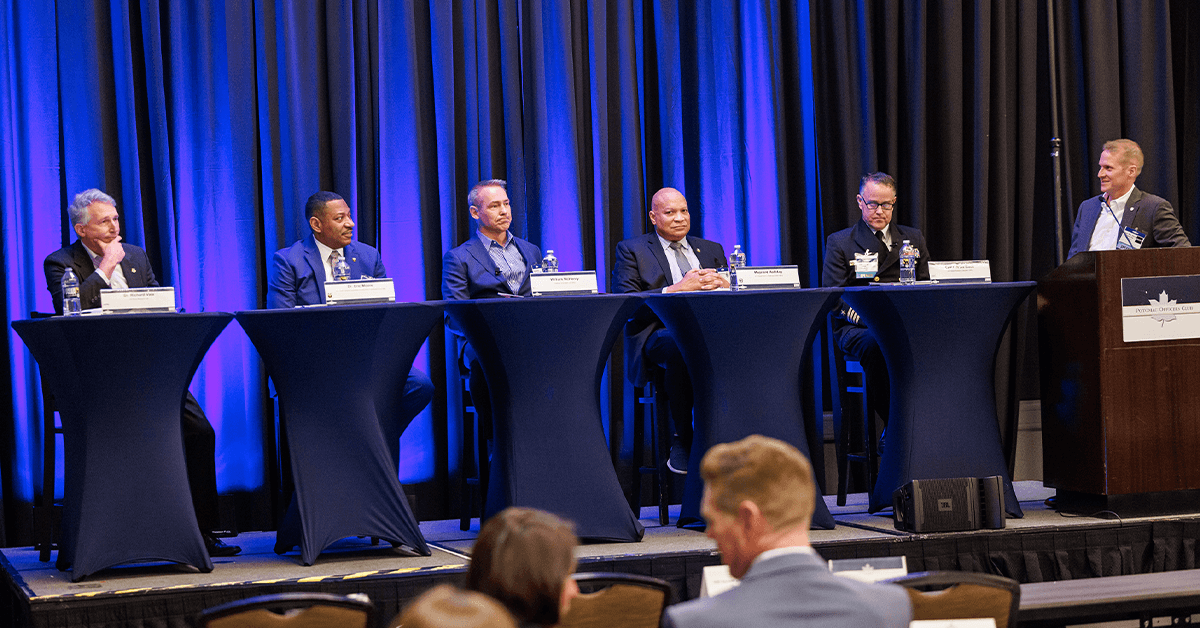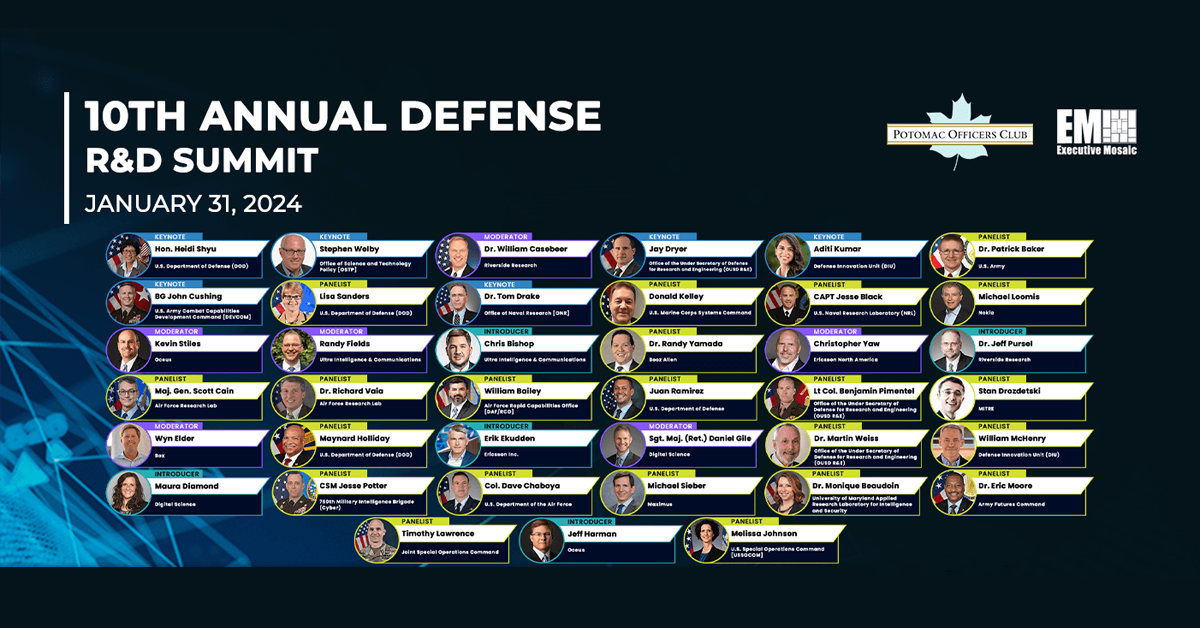Technological innovation is the top priority for most leaders in the defense landscape, but technology is just one of many components that need to come together to enable our tech superiority.
So what are the advancements we need to make in the next five to ten years to actually achieve overmatch and thwart global competitors? Government and industry leaders at the Potomac Officers Club’s 10th Annual Defense R&D Summit in January shared their answers.

For more insights from public and private sector decision makers, join us at our next event, the 2024 Space Summit on March 5. This is your chance to meet space officials, expand your network and unlock potential business opportunities. Register here.
According to Capt. Jesse Black, commanding officer for the U.S. Naval Research Laboratory, prioritizing better warfighter feedback loops could help military services achieve rapid problem resolution and inject some much needed speed into the often tedious acquisition timeline.
Black said we need to be able to put technologies or capabilities into the hands of warfighters, then we need “the ability to get back into the testing environment and get immediate feedback from the warfighter about what’s happening.”
“We’ve seen examples where we’ve taken that science and technology and put it into that environment and allowed iterations to happen, and we watched very rapid success happen,” he said during the Technological Overmatch: Ensuring the Innovation Advantage in a Complex Security Landscape panel moderated by Sgt. Maj. (Ret.) Daniel Gile, vice president of national security at Digital Science.
“[We need to] make sure that we have that ability to do that rapid testing feedback loop, and then let incremental discovery happen and incremental delivery happen to the warfighter,” Black added.

Maynard Holliday, assistant secretary of defense for critical technologies for the Office of the Under Secretary of Defense for Research and Engineering, pointed to microelectronics as an area of important development in the coming years and noted the nation’s recent progress in working to rebuild America’s microelectronics leadership.
“Microelectronics is at the forefront based on congressional investment. We are reshoring microelectronics packaging and fabrication of all those complex systems. We need to continue to take advantage of understanding the pulse of where the industry is and academia,” said Holliday. “What we recognize we have to do post-World War II is first follow and fast follow industry.”
Panelists Dr. Eric Moore, deputy to the commanding general of the U.S. Army Combat Capabilities Development Command, and Dr. Richard Vaia, chief scientist for the Materials and Manufacturing Directorate at the Air Force Research Lab, agreed that autonomy could completely change the research and development ecosystem.
“We think about autonomy in the battle space, but it’s going to revolutionize just how you do research and development. We’re bringing AI, automation, big data — once you close that loop and you put the scientist and engineer in the center, you can do things so much faster,” said Dr. Vaia.
Dr. Moore noted that autonomy could play a big role in research and development of dangerous chemicals and biologics. He shared that autonomy could have been a game-changer especially in his previous role as director of the DEVCOM Chemical Biological Center.
“Instead of putting humans in harm’s way… you could do some of these reactions, do some of these experiments using fully automated systems,” Dr. Moore explained.

For William McHenry, senior advisor to the director of the Defense Innovation Unit, open architectures and smarter government contracting could be particularly impactful in defense R&D.
“The government’s becoming more of a smart customer,” said McHenry. “So when you see in the past where we’ve gone in vendor lock for 10, 15 years and technology hasn’t kept up with our programs or vice versa. I think the government’s now getting smarter and you’re seeing contracts that are rewarding open architecture and access to government data.”






